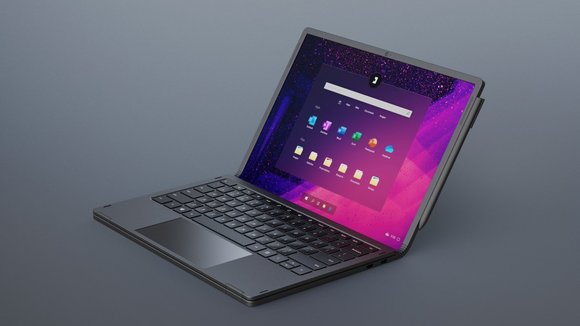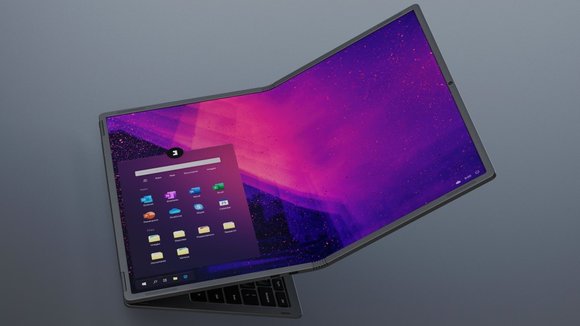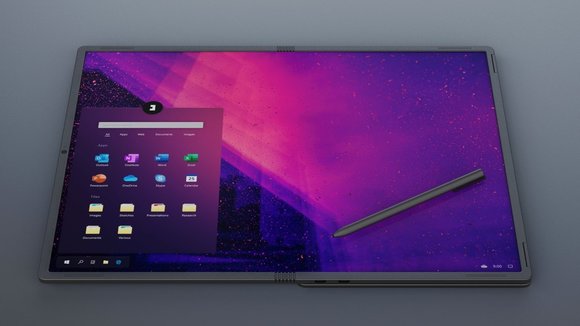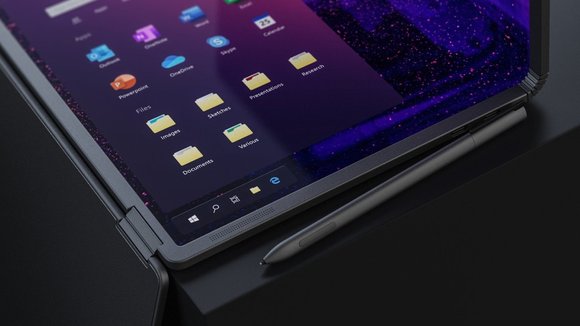1/6
The future of flexible displays lies in Laptops… The ‘Flexbook’ concept shows why.
Daehnert’s Flexbook concept appeared on my Instagram feed suddenly one fine morning, and I’ll admit, I paused to completely take it in. I didn’t just like the design, I loved it, because it felt almost like a eureka moment for me, because we’ve been struggling with finding a good use for flexible displays. Companies have tried them out in smartphones and failed miserably… but the Flexbook provides a refreshingly different use-case for the flexible display; and more importantly, it makes sense.
The Flexbook is like a laptop met a sandwich. Unlike most laptops, which have a two-part design connected via a hinge, the Flexbook has three parts. A main body, comprising your motherboard, electronics, ports, and keyboard… and around it, a two-part flexible screen that sandwiches the keyboard in the middle. The Flexbook can be traditionally used as a laptop with a 3:2 12.6-inch display, simply by opening it and using one half of the screen, or as a massive Wacom Cintiq-style tablet PC with a neat 4:3 17.8-inch touchscreen. This interchangeability is what makes the Flexbook such a unique laptop, because it can alternate between being a laptop and a tablet, much like the Microsoft Surface, but with the advantage of a massive 17.8 inch screen in the form factor of a 13 inch laptop.
Another win for the Flexbook is in the way Daehnert cleverly designed it. With an inward folding screen, like the Samsung Galaxy Fold, the Flexbook tends to leave a gap in its center, so as to protect the screen from breaking. That gap is reinforced by the Flexbook’s keyboard, which helps give the screen something to fold around, preventing it from creasing or damaging with overuse. Designed to look less as a limitation and more of a design feature, the Flexbook’s flexible display has a unique way of wrapping around the keyboard. It even packs a Microsoft Surface Pro-style hinge to open and close at any desired angle.
Daehnert’s Flexbook may be a concept, but it does illustrate an interesting possibility for laptops. Armed with a stylus, USB-C ports on both sides, and 4 speaker units arranged around the bezel of the screen, Daehnert’s Flexbook is a render I secretly wish was a leaked image. My only concern is the slight offset when you fold the keyboard backwards and try to rest the Flexbook on a flat surface like a table… but other than that, this might be just the best place to fit a flexible display. If anything, it should last longer too, because the average person opens their laptop less than 10 times a day, but looks at their smartphone more than 80 times a day. I should know… I’m that person.
Designer:
发布于2019-11-18
设计师
Jonas Daehnert
颜色
相关推荐






